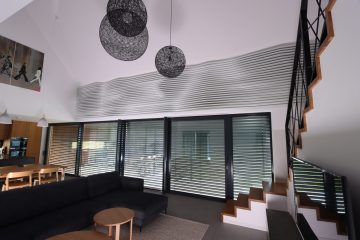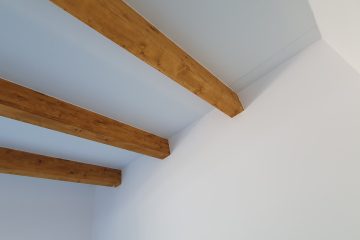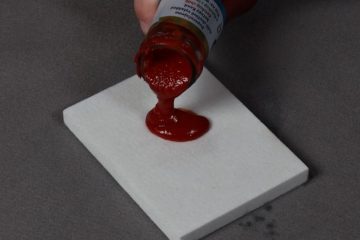The most important acoustic parameter is the reverberation time. It is denoted by T and is given in seconds. It is the time it takes for the sound pressure value to drop by 60dB after a sound pulse. The reverberation time (echo) is directly dependent on the acoustic parameters of the space. The ratio of acoustically absorbent to acoustically reflective materials has a major influence on reverberation.
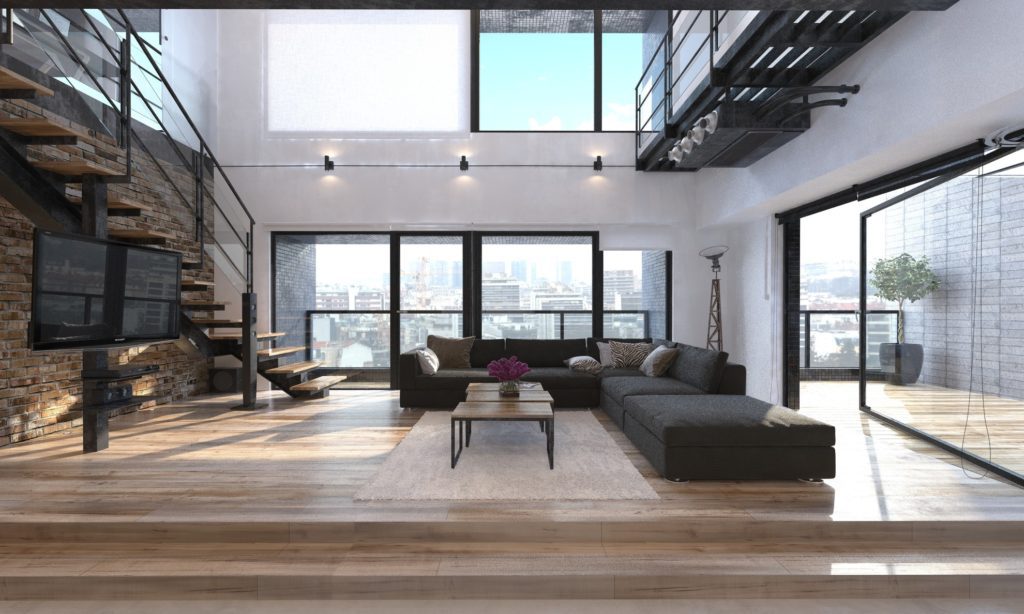
Reverberation time (echo size) is a key parameter for comfort and acoustic well-being. With an optimum reverberation time (0.4 s to 1.1 s ), the perception of the spoken word is more clear and understandable. The music is more pronounced, the individual instruments are more separated and distinct. It is proven that in a space with an optimal reverberation time, one is more focused and less tired. Reverberation (echo) can be reduced very easily with Silentmax® acoustic panels.
Reverberation is an easily measurable parameter, the optimum values of which are specified in the standard ČSN 730526 and ČSN 730527. For school premises according to Decree No. 410/2005 Coll. it is obligatory to observe these values. Designers should also consider the reverberation time. In modern living spaces with an excess of glass and hard reflective surfaces, the reverberation rate is almost always very high.
Feel with your ears
What is the acoustics and reverberation all about? It’s simple. In an enclosed space, any sound (acoustic energy) propagates in all directions. It hits the glass, the wall, the carpet, and bounces off them. The acoustic energy fades with each reflection (depending on the acoustic absorption of the surface) and keeps bouncing around until it fades completely. This time is the reverberation time. Sound has a velocity of 345ms-1, so do the math yourself to see how many times the sound bounces at you.
A clap of the hands will tell you a lot
A loud clap of hands will tell you a lot. Clap in spaces with different acoustics and listen where you feel comfortable. Hallway, living room, bedroom, gym, restaurant, office, classroom, …. you will definitely hear the difference.

Large reverberation value (T>1s)
You can hear the echo for a long time, the long reverberation is unpleasant. It interferes with concentration and focus. The spoken word is less clear and listening is tiring in the long term. In large, open, L-shaped or open-space spaces, where an open corridor is connected to the living room by a staircase, you may hear a ‘flutter echo’ – an irregular, pulsating reflection of sound. You don’t enjoy living, working or relaxing in such an environment. You don’t even get used to bad acoustics.
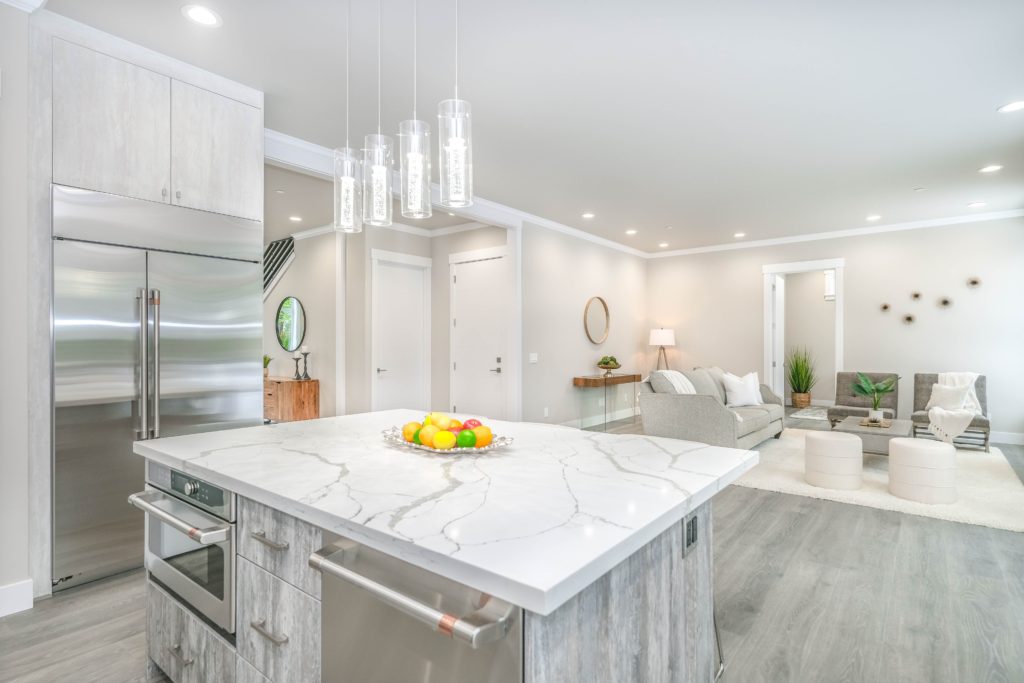
Very low reverberation (T<0.1 s)
In practice, we hardly find any. These are mainly test rooms and acoustic laboratories, where the surface of all walls is acoustically highly absorbent. Such a space gives a cramped impression, strange and uncomfortable.
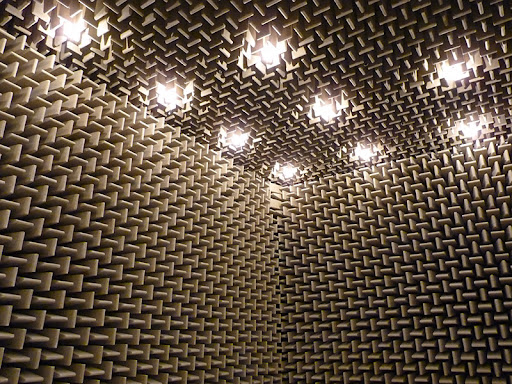
The ideal is somewhere in between. In practice, in the vast majority of cases, the reverberation time needs to be reduced, so in this article we will only be concerned with reducing the reverberation time.
On what reverberation time depend?
The degree of reverberation depends on the size of the enclosure and the ratio of the areas of acoustically reflective to acoustically absorbent materials. Standing waves also affect the reverberation time in sparsely structured spaces.
In modern interiors with an excess of glass and hard washable floors, reverberation time is usually very high above 1,5 s.
How to reduce reverberation?
Simple! Add acoustically absorbent materials to the space. Anything soft will do the job, such as an upholstered chair, a rug, flowers, a thick curtain, etc. Acoustic panels with very high absorption of acoustic anergy are a trend. Silentmax® acoustic panels, for example, are extremely absorbent of acoustic energy, design-oriented, maintenance-free, flame-retardant and chemically resistant.
How many acoustic panels will I need?
Depending on the size of the space and your preferences, how perfect you want the acoustics to be. In a living room, you probably don’t need the superior acoustics of a listening studio.
Even a small and inexpensive change will make a big difference in an acoustically lousy space.
The reverberation time (RT60, when the noise level drops by 60dB) should ideally be between 400 and 800 milliseconds.
Calculate for yourself how many Silentmax® acoustic panels you will need with the Acoustic Calculator.
Simulation
The 2D animation simulates the spread of acoustic energy in a 5×7 m space. The NRC absorption coefficient was set to 0.1, which means that with each reflection from the wall, the simulated point loses 10% of its energy. One acoustic energy source is placed in the space. The energy is indicated on a scale from red to black. Each point has a direction, a speed of sound of 345 ms-1 and an energy at the beginning from 2550 (red) to 1 (black). If the value is less than one, the point disappears.
Acoustic energy in a closed space
The first animation shows how acoustic energy fills the space without acoustically absorbent materials. With each reflection off the wall, the energy is reduced by 10% until it disappears completely. 27,000 points of acoustic energy are retained in the space.

The second animation shows the addition of 3.5 m of acoustically absorbent material to the left wall. The absorption of the material is 0.9. The amount of energy remaining in the space is 7300 points, which is 77% less than the first simulation.
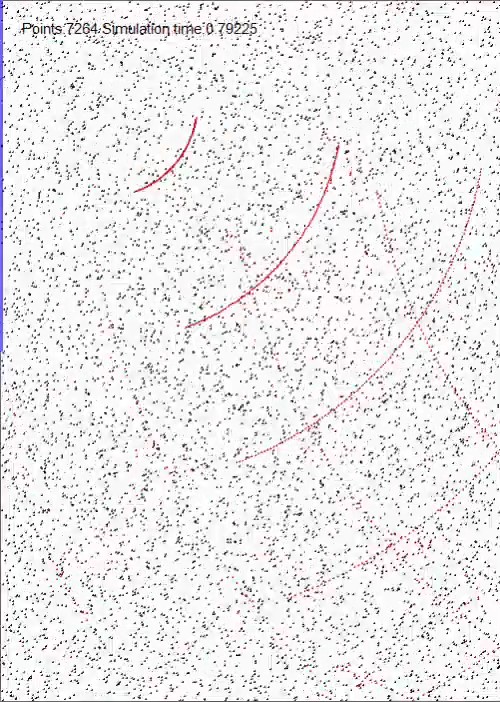
The third animation shows the acoustically absorbent material at two locations 2×3.5 m, which is 29% of the surface. The acoustic energy in the space remains at 4550 points, which is 84% less than the variant without acoustically absorbent material.
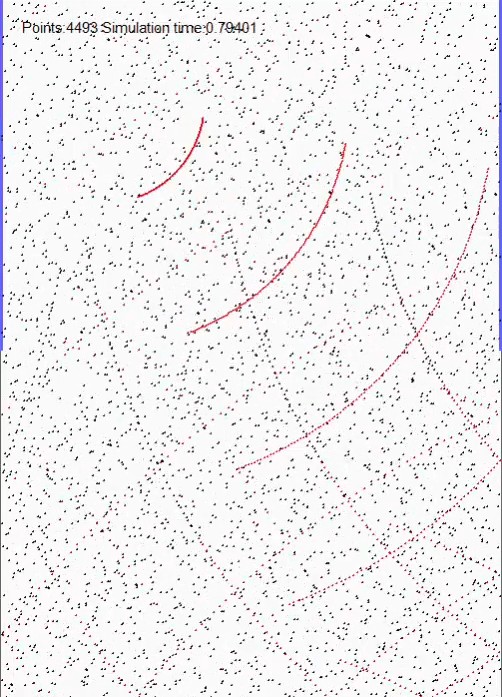
The demonstration visualizes the behavior of acoustic energy in 2D space, for clarity. In practice, we have to consider the space in 3D. The height, width and length define the total volume and total surface of the space. For the surface, we then determine the amount of acoustically absorbent and acoustically reflective materials. Their ratio then determines the reverberation value of the space.
Acoustics standards
They define the requirements for different types of spaces so that the human perception of sound is understandable and natural.
ČSN 73 0526 – Acoustic
Designing in the field of spatial acoustics, studios and rooms for sound recording, processing and control.
The standard defines sound energy distribution, sound field uniformity, time sequence of sound reflections, impulse responses and their measurement, measurement methods, etc.
The standard defines the reverberation time for certain types of spaces
| Room type | Volume V0 (m3) | Reverberation T0 (s) |
| Radio studio | 30 | 0,3 |
| Broadcasting station, dubbing studio | 90 | 0,3 |
| Room for directing movies | 130 | 0,3 |
| A small drama studio, a television newsroom | 180 | 0,4 |
| A medium-sized drama studio | 500 | 0,5 |
| Mixing hall for multi-channel sound recording | 700 | 0,5 |
| Technical room for transcription, editing | 0,5 | |
| Mixing hall | 700 | 0,7 |
| A large drama studio | 1000 | 0,8 |
| Small music studio | 1500 | 1 |
| Medium sized music studio | 4000 | 1,5 |
| A small television film studio | 5000 | 0,8 |
| Medium television film studio | 10000 | 1,1 |
| A large music studio for symphonic and operatic music | 13000 | 1,8 |
| A large television or film studio | 20000 | 1,3 |
ČSN 73 0527 – Acoustic
Projecting in the field of spatial acoustics, spaces for cultural purposes, spaces in schools, spaces for public purposes.
The standard deals with permissible background noise, volume, shape of space, reverberation time, spaces for public purposes.
| Determination | Reverberation T0 from (s) | Reverberation T0 to (s) |
| Music | 0,8 | 1,2 |
| Music / Speech | 0,8 | 1,2 |
| Speech | 0,8 | 1,2 |
| One-channel cinema | 0,7 | 1,3 |
| Multichannel cinema | 0,9 | 1 |
| Gym / sports hall | 0,8 | 1,2 |
Requirements for spaces in schools
| Space | Volume (m3) | Reverberation T0 (s) |
| Classroom and listening room | do 250 | 0,7 |
| Listening room | nad 250 | 0,7 až 1,1 |
| Language classroom | 130 až 180 | 0,45 |
| Audiovisual classroom | 200 | 0,6 |
| Classroom of music education of reproduced music | 200 | 0,5 |
| Music education classroom | 200 | 0,9 |
| Classroom for playing individual instruments and solo singing | 80 až 120 | 0,7 |
| Classroom of orchestral playing | 50 až 20000 | 0,9 až 1,5 |
| Gymnasium and swimming hall of all types of schools | 50 až 10000 | 1,1 až 2,2 |
